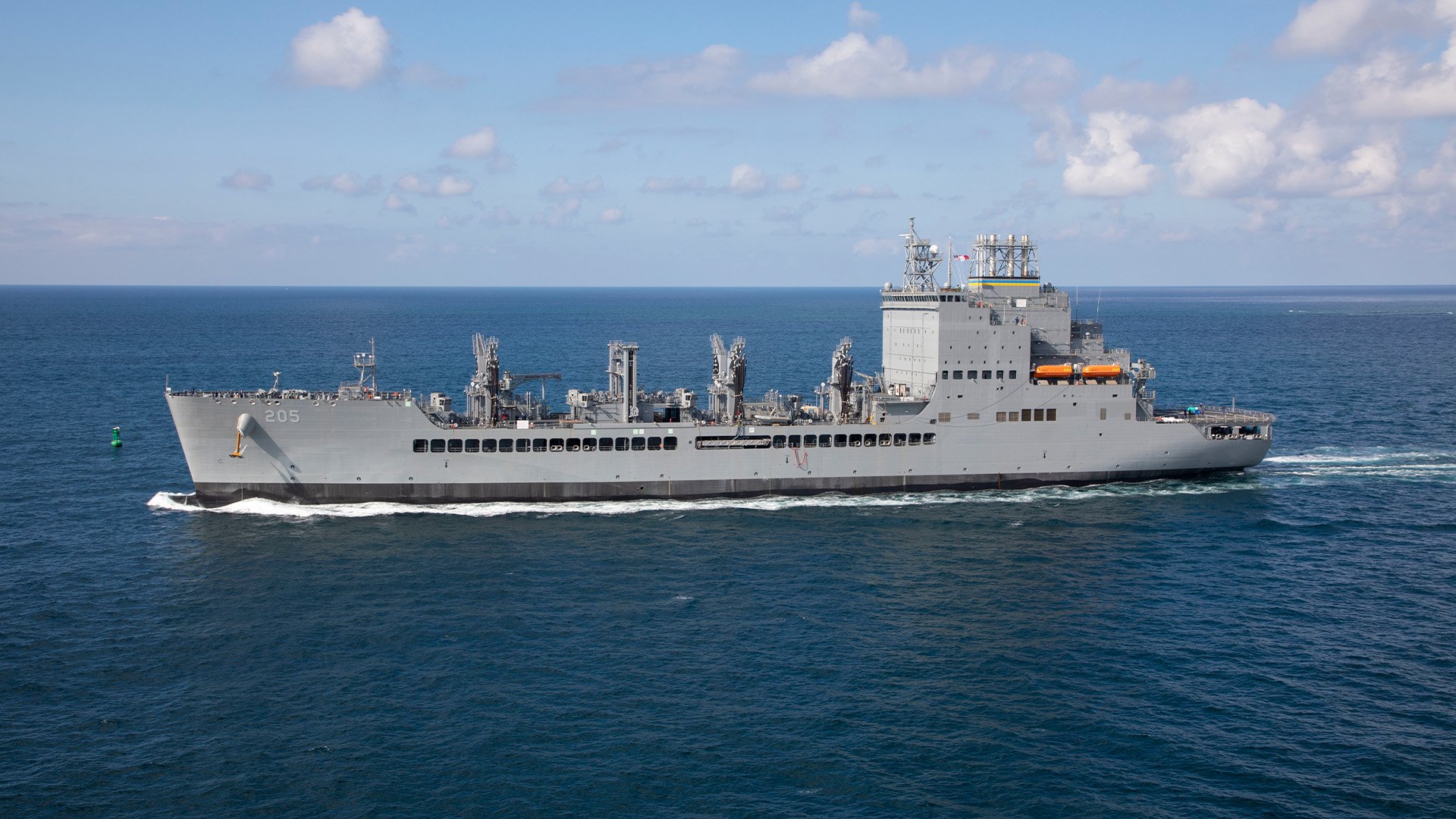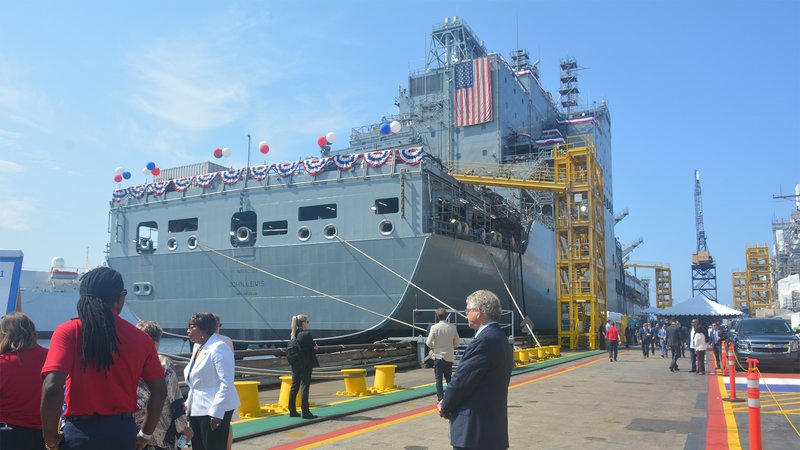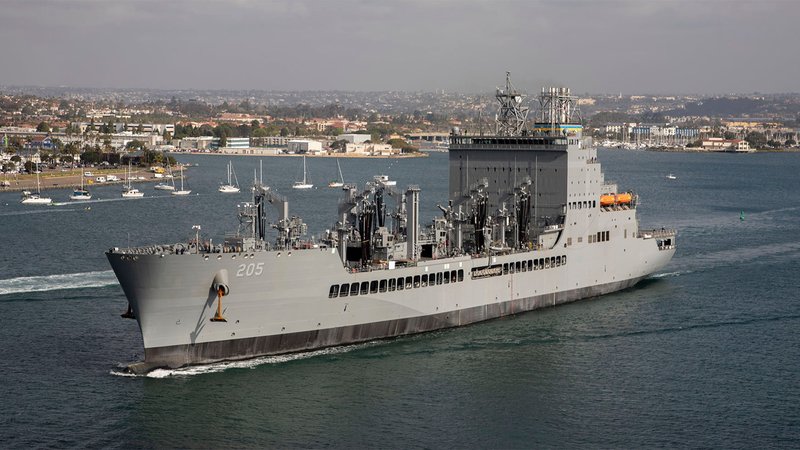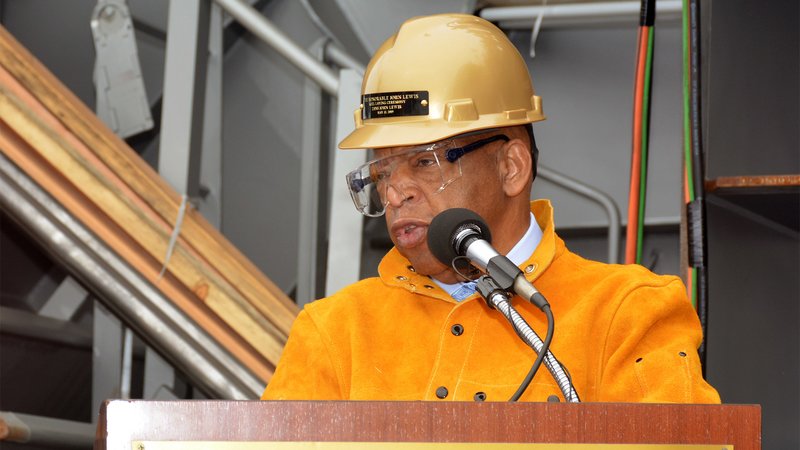
The US Navy's newest fleet replenishment oiler, John Lewis, steamed to rescue a man in a sinking sailboat off California on Dec. 12, 2022. Named for the great civil rights leader, John Lewis is operated by Military Sealift Command. US Navy photo.
"Gray Hull Navy ship, this is a sailboat Mixeleon in distress 7 miles from you."
That was the emergency radio blast on VHF Channel 16 heard by the crew of the John Lewis, the US Navy’s newest high-tech oiler, on Monday, Dec. 12, roughly 213 nautical miles south of San Diego.
The oiler immediately turned to begin rescue operations. Steaming through the Pacific Ocean, the crew came upon the sinking sailboat in the swells.
“Its sails were ripped off during a squall about six days prior to the rescue,” said Capt. Dan Glazier, the civil service commander of John Lewis, in an email to Coffee or Die Magazine.

The fleet replenishment oiler John Lewis (T-AO 205) was christened during a ceremony at the General Dynamics NASSCO shipyard in San Diego, California, on July 17, 2021, and officially transferred to the US Navy and Military Sealift Command a year later. Military Sealift Command photo by Sarah Burford.
But saving the man on board the Mixeleon wasn’t going to be easy.
Launching a small rescue boat in seas slapped by 25-knot sustained winds was tricky, so the crew decided against that.
Maneuvering a 746-foot oiler gingerly up to the battered boat so the mariner could scramble up the pilot ladder also wasn’t easy, but that’s what they did. And it worked.
The crew gave the man a medical examination, a hot shower and a hearty meal, dry clothes, and a free ride to San Diego, which is where the oiler was heading when it diverted for the rescue.
“I’m glad we were in the area and were able to help! Everything has a purpose, and now this guy can make it home for the holidays rather than the alternative, stuck on the ocean," said Glazier in a prepared statement.

On May 3, 2022, Military Sealift Command released a photo of the future John Lewis, a fleet replenishment oiler, conducting acceptance trials off California. The US Navy accepted it two months later. Military Sealift Command photo.
Glazier told Coffee or Die his crew normally would’ve tried to tow the sailboat to San Diego, but the seas were too rough. The problem was that a sinking sailboat remains a hazard to navigation, but the mariner and Glazier’s crew had a solution.
“In this case, the sailboat had no engine and was equipped with solar cells so (the sailboat’s operator) turned on the navigation lights so it could be seen at night,” and the oiler’s navigator shot out a Notice to Mariners, with the Mixeleon’s approximate position, warning other crews that it was abandoned and adrift, Glazier said.
Built by the National Steel and Shipbuilding Company — better known as NASSCO, a division of defense contracting giant General Dynamics — the $640 million John Lewis transferred to the Navy on July 27, making it one of the sea service’s newest vessels.

US Rep. John Lewis addresses attendees at the keel laying for his namesake ship, Military Sealift Command's newest fleet replenishment oiler, USNS John Lewis, during a ceremony at the General Dynamics NASSCO Shipyard in San Diego on May 13, 2019. A legendary civil rights leader, Lewis died on July 17, 2020. Military Sealift Command Pacific photo by Sarah Burford.
It’s the lead ship in a new class of 20 oilers, all of them slated to become workhorses for Military Sealift Command, shuttling diesel and jet fuel, lubricating oils, and even fresh and frozen food and potable water to Navy warships at sea.
John Lewis is one of the more than 110 vessels Military Sealift Command operates across the globe. Ship spotters know to look for the “T” prefix on the hull numbers, which designates them as “USNS” for United States Naval Ship.
Commissioned warships bear the “USS” designation.
Although some Military Sealift Command vessels tote small military detachments to carry out specialized functions such as communications or supply operations, the vast majority of crew members worldwide are civilians, like Capt. Glazier.
Read Next: F-35B Joint Strike Fighter Pilot Ejects From Texas Crash

Carl Prine is a former senior editor at Coffee or Die Magazine. He has worked at Navy Times, The San Diego Union-Tribune, and Pittsburgh Tribune-Review. He served in the Marine Corps and the Pennsylvania Army National Guard. His awards include the Joseph Galloway Award for Distinguished Reporting on the military, a first prize from Investigative Reporters & Editors, and the Combat Infantryman Badge.
BRCC and Bad Moon Print Press team up for an exclusive, limited-edition T-shirt design!
BRCC partners with Team Room Design for an exclusive T-shirt release!
Thirty Seconds Out has partnered with BRCC for an exclusive shirt design invoking the God of Winter.
Lucas O'Hara of Grizzly Forge has teamed up with BRCC for a badass, exclusive Shirt Club T-shirt design featuring his most popular knife and tiomahawk.
Coffee or Die sits down with one of the graphic designers behind Black Rifle Coffee's signature look and vibe.
Biden will award the Medal of Honor to a Vietnam War Army helicopter pilot who risked his life to save a reconnaissance team from almost certain death.
Ever wonder how much Jack Mandaville would f*ck sh*t up if he went back in time? The American Revolution didn't even see him coming.
A nearly 200-year-old West Point time capsule that at first appeared to yield little more than dust contains hidden treasure, the US Military Academy said.












